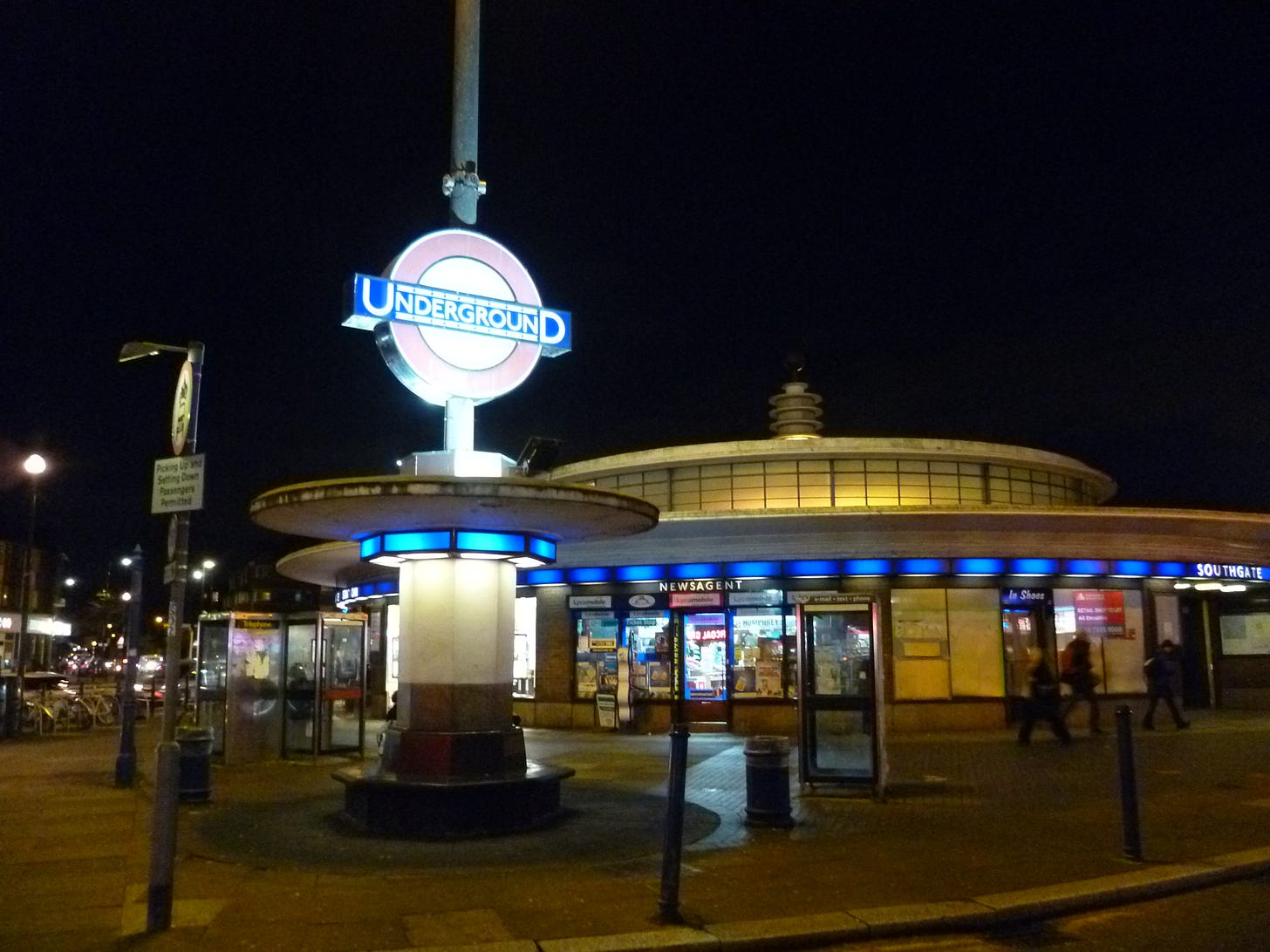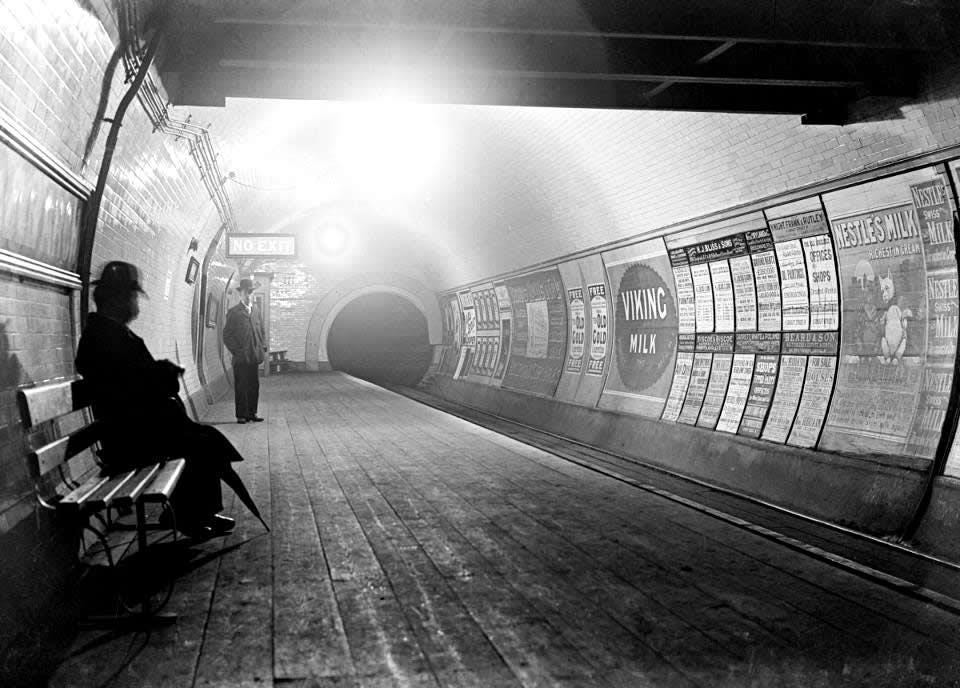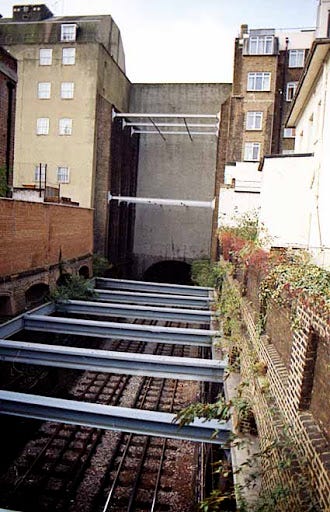Visit our website for more info!
Whether it be the pop culture icon of the red Routemaster, the unique oxblood faience and futuristic Art Deco stations that house stops on the Underground, the soaring, unmanned DLR or even the much-ridiculed ‘dangleway’ that cost the taxpayer tens of millions but only serves four regular customers, the city’s public transport system is perhaps its most defining characteristic.
The long history of this vast network is not only fascinating, but is key to understanding how London became the city it is today and why transport data is so important for navigating and organising a city that on the surface may seem incomprehensible. At a time, too, when fewer journeys are taken as a result of the Covid-19 pandemic, it is important to keep an interest in and generate enthusiasm for public transport in the hope that we see a large-scale return as and when it becomes safe to do so.
In the second part of this series of articles we will investigate the origins, history and future of the much-loved Tube.
One of the defining images of 19th century England is that of a steam train chugging past green fields on its journey between newly industrialised cities. To this day rail enthusiasts recreate these bucolic scenes on practically every viable railway line to tap into the nostalgic heart of the country’s population and celebrate Britain’s pioneering role in the development of global train travel. But despite the enthusiasm for re-enactments of the country’s past glories, one place where you’ll never see a steam train today is the very place where it arguably made its biggest impact on London: underground.
It’s hard to imagine today that only 150 years ago it was considered a good idea to run sulphur and carbon dioxide-spewing steam engines towing open wooden carriages through gas-lit, barely ventilated, hand-dug tunnels mere inches below the congested, leaking, unpaved road above. Even back then The Times called it “an insult to common sense”. But when you consider the Victorians made wallpaper from arsenic, makeup from lead and children’s toys from explosive plastic, it’s hardly surprising that an underground steam train was deemed appropriate in spite of the potential dangers it posed.
And we’re glad they persevered, otherwise London would not have the world-famous underground network that proudly boasts today; a network that the Institution of Civil Engineers called “one of the true wonders of the western world”.

In 1863 the Metropolitan Railway finally opened its doors after a decade of government lobbying, financial difficulties and three years of construction. It linked Paddington and Smithfield meat market with a 6km tunnel via seven stations. Proposed by lawyer Charles Pearson decades earlier, the line was intended as a means of bypassing the increasing carriage traffic snarling up London’s narrow streets.
It was dug using the “cut-and-cover” method, which entailed digging an open trench, building a brick tunnel at the bottom of it, and covering it back over with dirt—easy when following a road, but more difficult when faced with buildings, and (perhaps echoing the current debates around Crossrail and HS2) many were knocked down in the process. Today the 5ft thick facades at 23 and 24 Leinster Gardens in Bayswater mask the gap left when the former residences were demolished to make way for the tunnelling.
The project cost £1 million (more than £110 million in today’s money), and over the first twelve months “The Met” carried 9.5 million Londoners, the rather miserable subterranean conditions—compared by one passenger to Hades—notwithstanding. In the next year this jumped to more than 12 million, the success stimulating a fierce contest to be the next entrepreneur build a new underground line. The Met was extended to Hammersmith, and it was agreed by those in government that all seven of London’s rail termini should be connected by a ring of underground rail.
The District Railway was the next to construct its line in 1868 despite private conflicts with The Met, servicing Paddington, Euston, Kings Cross, and later Farringdon to complete the Inner Circle. The lines kept growing, with the District reaching Richmond and Wimbledon to the south west and Whitechapel to the east, very reminiscent of its current route, and The Met sought out Harrow and even stretched 80km north of Baker Street to Verney Junction in Buckinghamshire.
By this point, deep-level boring techniques had been developed using tunnelling shields, originally designed by famed engineer Isambard Kingdom Brunel and his father Mark, into which workmen were crammed into tiny, claustrophobic chambers to dig a way through the dirt at a painfully slow pace. This was made easier though by the unique London clay the city is built upon, which is soft but stable.
While the technique had been used for a few tunnels in the past, it was first deployed, after safety improvements by James Henry Greathead, for the construction of the City and South London Railway in 1890 from Stockwell to King William Street near Elephant and Castle. This route would later become the southern stretch of the Northern Line. Many of the cast iron rings that were used to reinforce the tunnels during this period can still be seen today, and Greathead’s improved circular shield is what gave the ‘Tube’ its iconic nickname.
These shields encouraged more and more lines to be built, with the Waterloo & City (known as “The Drain”) opening in 1898 and the Central London Railway between Shepherd’s Bush and Bank in 1900. This was known as the “Twopenny tube” and carried 15 million passengers that year. It was around this time that advances in electricity began to bring an end to the smoke-filled tunnels as American financier and crook, Charles Tyson Yerkes Jr. bought the District Railway and introduced DC current-powered lines after he had experienced powered streetcars in the USA.
Yerkes quickly bought the rights to almost all existing underground railways in London, forming the Underground Electric Railways Company of London (UERL) in 1902 and greatly expanding the network with the help of Lots Road Power Station in Chelsea. The station was commissioned to power these newly electrified lines and at the time was the largest power station ever built. The Bakerloo line was built between Baker Street and Waterloo, and the Piccadilly line was formed out of the amalgamation of the Great Northern, Piccadilly & Brompton railways in 1906.
The UERL commissioned architect Leslie Green to design ground level station buildings from 1903. He developed the Modern Style which brought British Art Nouveau to architecture defined by the oxblood faience exterior tiling, and interior and platform tiling that was uniquely styled to capture the essence of each individual station. The two-storey buildings were large enough to accommodate ticket halls and new-fangled lift shafts, and can be seen on the Piccadilly, Bakerloo and Northern lines today.
The next few years saw a steady expansion of the network and the first combined marketing campaign using the “UNDERGROUND” branding as well as the recognisable bulls-eye roundel associated with TfL today. These were established by design-oriented UELR director Frank Pick, but the First World War delayed much of the building until the 1920s. The interwar suburban boom, however, gave new life to the underground, particularly to the Met, who, still independent from the UELR, were able to develop surplus land around their stations.
This was the arrival of “Metroland”, the rustic Middle England village separate but within touching distance of the Big Smoke. Defined by sentimental but quintessentially English Tudor Revival housing estates and wide, leafy streets, towns like Wembley, Harrow, Ruislip, Rickmansworth, Chorleywood and Chenies were born, alongside a brilliant, if twee, advertising campaign encouraging an exodus from the city centre. Urban sprawl was truly upon us.
As Metroland was taking shape on the independent Met, the UELR was also expanding its lines. Frank Pick was keen to make the stations that would accommodate these new platforms welcoming, efficient, and above all modern, in what he described as “a new architectural idiom.” Charles Holden was chosen as the architect for the job. These new stations had to be large enough to accommodate escalators, but able to slot into the increasingly urban landscape. Holden began with Piccadilly Circus before moving onto 55 Broadway above St James’s Park station, which would be the new headquarters of the Underground Group. This was the tallest building in London at the time and included risqué carvings by modernist sculptor Jacob Epstein that shocked the sensibilities of many at the time.

Into the 30s Holden, inspired by his travels around Europe, began to design the stations for the expansions of the Piccadilly, Central and Northern lines, using Sudbury Town as a prototype, which Pevsner would go on to describe as a “landmark” that kicked off the “classic” phase of Underground architecture.
To coincide with these expansions and the modernisation of the Underground’s architecture and reputation, another icon of London was created. Over 20 years before the Routemaster was conceived, the angular, colourful Harry Beck-designed tube map came into production in 1931. Using only brightly coloured straight lines in the style of a circuit diagram, Beck created a map that ignored genuine geography in place of simplicity of use—who cares what’s above when you’re below?
In 1933 all the lines were amalgamated under the London Passenger Transport Board. Under Pick’s vice-chairmanship, a New Works Programme was announced in 1935 which sought to expand further, updating the trains in the process. Once again, though, the outbreak of war slowed down the programme and many tube stations took on a very different use.
At the beginning of the Second World War, tube stations were locked to prevent the public using them to shelter from the Blitz. It took a campaign led by the Communist Party MP Phil Piratin, which involved leading 100 people into the basement of the exclusive Savoy hotel to shelter from German air raids in 1940 that forced the LPTB to open them up for public use. Thanks to this campaign 175,000 people were using tube stations for shelter each night.
They weren’t totally safe though, as six stations including Bank were breached by bombing, and 173 people were killed in a crush at Bethnal Green following a false alarm. The tragedy—the largest single loss of civilian life in the UK in the Second World War—was covered up by the government until 1946. A memorial was built at the station in 2007. Some stations were used as manufacturing centres or control rooms, and Down Street station was even used by Winston Churchill for meetings of the War Cabinet.

All of Britain’s railways were nationalised on the first day of 1948 under the British Transport Commission. They were responsible for the repairs and completed much of the work left unfinished before the war, though growth to the network was put on hold as government funds were directed towards more important matters such as rebuilding, housing and feeding the traumatised nation.
It wasn’t until the hundredth anniversary of London’s first underground railway that a new line would be built. 1963 saw the opening of the Victoria line, a feat of engineering that traversed London from north east to south west and dramatically reduced congestion on other lines. This was the first line to use the automatic gates we are accustomed to today. It was extended down to Brixton in 1971 and the Piccadilly line to Heathrow Airport in 1977. The Jubilee line was opened soon after in April 1979 to honour the Queen’s Silver Jubilee.
The GLC took over London’s transport in 1981, and introduced fare zones similar to those that appear today, but its stewardship wasn’t to last as under Thatcher it was moved, along with the bus network, into the hands of London Regional Transport in 1984 prior to the dismantling of the GLC in 1986. The 90s saw a continued defunding of services by central government in a similar fashion to the bus network and trains were painted to reduce the cost of cleaning graffiti. That said, the financialisation of the Docklands and Canary Wharf encouraged the extension of the Jubilee line in 1999 to accommodate it and coincide with the opening of the Millennium Dome in 2000.
From 1999 onwards the central government split up the London Underground in order to implement a public-private partnership that gave private firms Metronet and Tube Lines (both consortiums of energy, water and construction companies) the responsibility for upgrading the system. Scepticism of the PPPs from new Mayor of London and leader of the GLA, Ken Livingston, proved correct as performance plummeted and the companies entered administration in 2007 and 2010 respectively, allowing TfL to buy out the companies and take control of the Tube.
From then on up until the 2020 Covid-19 outbreak the Underground had been running reasonably smoothly. The Night Tube was introduced in 2016 on certain lines on Fridays and Saturdays, allowing revellers and night workers 24-hour underground travel, and, though originally planned to open in 2018, the new Elizabeth line, or Crossrail, is (supposed!) to start running in 2022 after four years of delays.
The Northern line is set to extend to Nine Elms in Vauxhall, perhaps in an attempt to bring some life to the soulless, mostly deserted luxury development. Later down the line (perhaps in 2030) a proposal that divides south-east Londoners, the Bakerloo line extension, should bring underground stations to Lewisham via Old Kent Road and New Cross, the area having been deprived any Tube stops because of the long-lost tram network and Second World War steel shortages.
But just like the bus network, the Tube’s funding is driven by customer fares far more than government subsidies, contrary to all other major public transport systems the world over. As a result of the pandemic the London Underground has seen passenger numbers fall to 1800s levels, leaving it dangerously low on funds and in need of numerous bailouts delivered to TfL.
This marvel of contemporary engineering, London’s unsung infrastructural hero that has continued to carry key workers to their jobs throughout the pandemic, is in danger of falling apart under the strain of funding cuts should passenger numbers not return. So, if you wish to see the Tube continue to fight another day, we urge you to use it when it is safe to do so, or else we might see over 150 years of history go down the tube!











